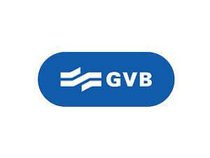Overcoming Congestion
Electricity grids are increasingly congested. This limits the feasibility of rolling out energy transition projects such as heat pumps and EV chargers. For electric public transportation grids, this limits the possibility of increasing the vehicle frequency or electrifying new bus fleets. Meanwhile, existing electric transport grids are historically oversized and underutilized, with ample spare capacity that can now be tapped into, enabled by advancements in power electronics, protection devices, and smart power management schemes.
An example of such an application is using the existing metro infrastructure of GVB in Amsterdam at metro station Noord to charge the GVB electric bus fleet serving the Amsterdam Noord region.
Innovative Solution
Connecting electric vehicle (EV) chargers to the power grid requires an additional reserve capacity from the network operator who is increasingly incapable of providing it. Another solution is to connect the EV chargers to the third rail of the metro network, merging the bus charging load demand with the metro load demand under the existing traction grid connection. This is possible because electric transport grids are always oversized and underutilized to account for the rare worst-case scenarios of high traction demand.
“In times of grid congestion, it is important to rethink and re-use our existing infrastructures. Such scientific explorations are the necessary first step and bring great value to our approach.”
Will de Jager (GVB)

Challenges
Connecting EV chargers to the third rail of the metro infrastructure allows them to harvest the excess braking energy from the metro vehicles, which would otherwise be wasted. However, this comes at a trade-off with the increased power transmission losses that grow non-linearly with added loads on the traction third rail. More importantly, while reserve power capacity might be readily available, the increased voltage drops on the power feeder line caused by the addition of extra loads such as EV chargers could be serious enough to interfere with the metro fleet operation.
Implementation Strategies
The computation of net energy savings and the study of the operational feasibility of this project is carried out by detailed simulation works between the AMS institute, TU Delft, and GVB. Ample amount of data is used to verify and validate the designed models of the metro, traction grid, and bus charging profiles. Using these models, a wide array of possible scenarios are designed and tested. The project will be further carried to implementation by current discussions with local companies capable of designing and controlling the necessary charging hardware.
Charging electric vehicles from existing electric public transport infrastructures is a synergetic, efficient, and crucial step toward the future of stationary EV charging. This linking of infrastructures is universal: Light and heavy-duty chargers can be connected to any catenary network such as trolleybuses, trams, metros, and trains.
*Photo Credit: Arjo Frank Kievits
| Duration: |
|
Principal Investigators
Project members

Ibrahim Diab
Partners



